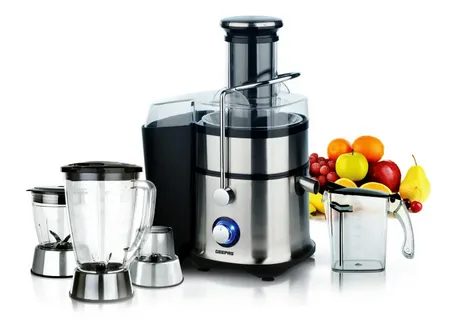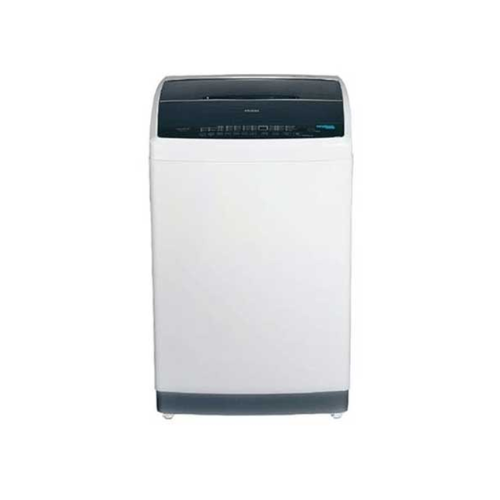Juicing has become more than just a trend; it’s a lifestyle choice embraced by health enthusiasts everywhere. If you’re searching for nutritious, delicious juice packed with vitamins and minerals, look no further than the Stainless Steel Juicer. Not only does this equipment provide superior durability and performance, but it also maximizes juice yield like none other. Whether aiming to boost your energy levels or incorporate more greens into your diet, knowing how to get the most out of your juicer can make all the difference.
Why A Stainless-Steel Juicer Is Superior
A Stainless-Steel Juicer stands out in a crowded market of kitchen appliances for several compelling reasons. First, its robust construction ensures longevity. Unlike plastic models that can crack or warp over time, stainless steel offers immense durability. This type of juicer is also resistant to rust and corrosion. You won’t have to worry about wear and tear affecting your health or the quality of your juice.
Moreover, Stainless-Steel Juicers often feature superior design elements that enhance efficiency. They typically provide a smoother extraction process, allowing you to enjoy juice with minimal pulp and maximum nutrients. From an aesthetic standpoint, stainless steel has a sleek and modern look that fits seamlessly into any kitchen decor. It’s not just an appliance; it’s a statement piece on your countertop that complements your commitment to healthy living.
Types Of Juicers: Centrifugal Vs. Masticating
When it comes to juicers, understanding the difference between centrifugal and masticating models is essential for maximizing juice yield. Centrifugal juicers work quickly and efficiently. They use high-speed blades to chop fruits and vegetables, spinning them rapidly. This method generates heat, which can lead to nutrient loss over time. On the other hand, masticating juicers operate at a slower pace. They crush produce using an auger or gear mechanism before pressing it through a screen. This process minimizes oxidation and retains more nutrients in your juice.
Centrifugal juicers are ideal for those who prioritize speed and convenience. However, if you seek maximum juice extraction and nutritional value, investing in a masticating model pays off in the long run. Each type has its own benefits; knowing what suits your needs will greatly enhance your overall juicing experience.
How To Choose the Right Stainless-Steel Juicer
Selecting the right Stainless-Steel Juicer involves understanding your needs. Start by considering the type of juice you want to make. A masticating juicer is ideal if you’re leaning towards leafy greens or wheatgrass. Next, look at the size and capacity. A larger chute can save time on prep work, while compact models are easier to store. Consider how often you’ll be juicing; frequent users might benefit from a more robust design.
Check for features that matter to you—some models offer variable speed settings or quieter operation. Assessing ease of cleaning is also crucial; disassembly should be straightforward. Factor in your budget. Quality varies widely in price points, so determine what fits within your range while ensuring durability and efficiency are prioritized in your choice.
Preparing Fruits and Vegetables for Juicing
Preparing fruits and vegetables for juicing is a crucial step to maximizing your juice yield. Start by washing everything thoroughly. This removes dirt, pesticides, and bacteria. Next, slice larger produce into smaller pieces. This helps the juicer extract more juice efficiently. Cutting tougher vegetables like carrots or beets into uniform chunks can speed up the process.
Don’t forget about peels! Some fruits have nutrient-rich skins that enhance flavour and health benefits when included in your juices. However, others might need peeling to avoid bitterness. Remove seeds from stone fruits like peaches or cherries; they can affect taste quality during juicing. Consider mixing flavours strategically. Combining sweet apples with leafy greens creates a balanced drink while maximizing nutritional value.
Tips For Maximizing Juice Yield with A Stainless Steel Juicer
Select the freshest produce to maximize juice yield with your Stainless Steel Juicer. Ripe fruits and crisp vegetables contain more liquid. Cut ingredients into smaller pieces to facilitate smoother processing. This helps the juicer extract every drop without straining itself.
Proper Preparation is Key
Proper preparation of fruits and vegetables before juicing can significantly impact juice yield. Thoroughly wash all produce to remove dirt and pesticides. Cut fruits and vegetables into smaller pieces to facilitate easier processing by the juicer. Rolling leafy greens into tight cylinders is often helpful before feeding them into the juicer.
Use the Right Feed Chute
Most Stainless-Steel Juicers have different-sized feed chutes. Utilize the feed chute of the appropriate size for the type of produce you are juicing. Using a larger feed chute for small fruits or vegetables can lead to inefficient processing and reduced juice yield.
Maintain Optimal Speed
Stainless-Steel Juicers often have variable speed settings. Experiment with different speeds to find the optimal setting for each type of produce. Slower speeds may be more effective for softer fruits and vegetables, while higher speeds may be better suited for harder produce.
Regular Cleaning is Essential
Regularly cleaning your Stainless-Steel Juicer is crucial for optimal performance and maximizing juice yield. After each use, disassemble the juicer and thoroughly clean all parts according to the manufacturer’s instructions. Residue buildup can clog the juicer and reduce its efficiency, lowering juice yields.
Cleaning And Maintaining Your Juicer for Optimal Performance
Cleaning your Stainless-Steel Juicer is crucial for maintaining its performance. After each use, disassemble the parts and rinse them under warm water. This helps remove pulp residue that can affect taste. Use a soft brush or sponge to scrub hard-to-reach areas gently. Avoid abrasive materials that could scratch the surface of your juicer.
Soak components in warm, soapy water for about 15 minutes for deeper cleaning. Rinse thoroughly before reassembling. Make sure to dry all parts completely to prevent rusting. Regular maintenance extends the life of your juicer and ensures every glass of juice tastes fresh. Store your juicer in a clean, dry place when not in use. This simple habit keeps it ready for action whenever you’re craving a nutritious drink.
The Benefits of Using a Stainless-Steel Juicer
A Stainless-Steel Juicer brings a wealth of advantages to your kitchen. Its durability stands out. Unlike plastic models, stainless steel resists wear and tear, ensuring your investment lasts for years. Health enthusiasts will appreciate the non-reactive nature of stainless steel. It doesn’t leach harmful chemicals into your juice, preserving taste and nutrition. Juices made with this material can be fresher and more vibrant.
Another key benefit is the ease of cleaning. Stainless surfaces are less prone to staining or absorbing odours than other materials. A quick rinse is often all it takes. Additionally, these juicers tend to have a sleek design that complements any kitchen decor. They are functional and add an elegant touch to your countertop. Using a Stainless-Steel Juicer means enjoying delicious beverages while prioritizing longevity and health in every glass you pour.
The Ultimate Juicing Tool for Health and Durability
A Stainless-Steel Juicer stands out as a premier choice for health enthusiasts. Its robust construction ensures longevity, making it a worthwhile investment in your wellness journey. The materials used are not only durable but also non-reactive. This means that the flavours of your fresh juices remain pure and untainted by harmful chemicals often found in plastic counterparts.
Moreover, stainless steel is easy to clean and maintain, promoting hygiene—a crucial factor when crafting nutritious beverages. You want every sip to be refreshing and free from contaminants. In addition, many modern designs come with advanced technology that maximizes juice extraction while preserving vital nutrients. The result? A nutrient-dense glass filled with vibrant flavour. For those serious about their health, this tool becomes an essential kitchen companion—an ally in pursuit of optimal well-being through natural juices crafted at home.
Built To Last, Designed for Health-Conscious Juicers
A Stainless-Steel Juicer stands out for its durability and longevity. Made from high-quality materials, it can withstand daily use without showing wear or tear. This makes it a wise investment for anyone serious about juicing. Health-conscious juicers appreciate the non-reactive nature of stainless steel. Unlike plastic, which can leach harmful chemicals into your juice, stainless steel keeps your beverages pure and free from contaminants.
These juicers often feature sleek designs that fit seamlessly into modern kitchens. Their aesthetic appeal is matched only by their functionality, making them an attractive addition to any health-focused lifestyle. Moreover, many models have advanced features designed to maximise juice yield while preserving nutrients. With every glass poured, you’re enjoying delicious flavours and nourishing your body in the best possible way.
Conclusion
Maximizing juice yield with a Stainless-Steel Juicer is not just about the machine. It’s about understanding your ingredients and refining your technique. Every fruit and vegetable has unique characteristics influencing how much juice it can produce. Investing in a high-quality juicer pays off in both flavour and nutrition. The durability of stainless steel ensures longevity, making it an eco-friendly choice for health enthusiasts.
FAQs
What is the difference between a centrifugal and masticating Stainless-Steel Juicer?
Centrifugal juicers use high-speed blades to extract juice quickly but can introduce heat and air, potentially affecting nutrient quality. Masticating juicers operate at slower speeds, grinding and squeezing produce for maximum yield without generating heat.
Can I juice leafy greens in a Stainless-Steel Juicer?
Yes! Many stainless steel masticating juicers excel at extracting juice from leafy greens like spinach or kale. Just be sure to alternate with harder fruits or vegetables for optimal extraction.
How do I clean my Stainless-Steel Juicer effectively?
Cleaning your Stainless-Steel Juicer is simple; most models come apart easily. Rinse all removable parts immediately after use to prevent pulp from drying out. A quick soak in warm, soapy water followed by a thorough rinse usually does the trick.
Are there any specific fruits or vegetables that yield more juice than others?
Absolutely! Fruits like watermelon, oranges, and grapes have higher water content, resulting in more juice per weight than denser options like bananas or avocados. Experimenting with combinations can enhance both flavour and yield.


